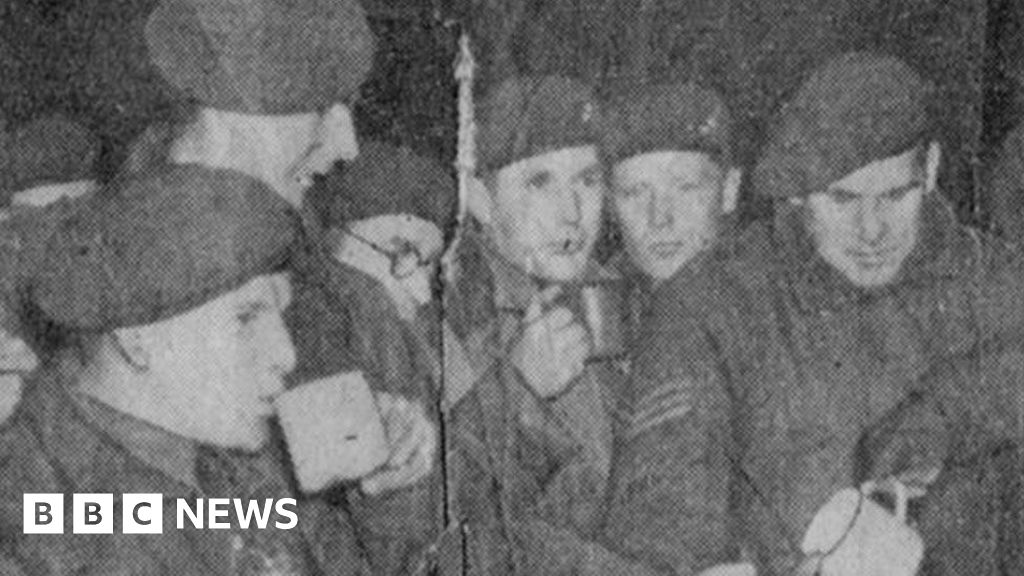
The photograph is iconic: British paratroopers, mugs of tea in hand, captured just before dawn on March 24th, 1945. These men, seemingly calm amidst the pre-dawn quiet, were about to embark on Operation Varsity, the largest single airborne operation in history, a pivotal battle that significantly accelerated the end of World War II in Europe. Nearly eighty years later, their story, a testament to courage, planning, and the sheer scale of the undertaking, remains compellingly relevant. This wasn’t just another battle; it was a meticulously orchestrated symphony of air power, ground forces, and unwavering determination.
Operation Varsity, launched across the Rhine River into the German heartland, aimed to support the 21st Army Group’s ground offensive. The objective: to seize the bridges across the Ems and secure a foothold for a rapid advance into the German industrial heartland. The operation involved a staggering force: approximately 35,000 airborne troops from the British and American First Allied Airborne Army, supported by a massive airlift of over 1,500 gliders and transport aircraft. This represented a monumental logistical feat, requiring precise coordination between airfields across England and France, weather forecasting that was crucial for the success of such an ambitious plan, and the impeccable timing of simultaneous air drops across a wide front.
The Challenges and Triumphs of Operation Varsity
The challenges were immense. The scale of the operation necessitated flawless execution. A single hitch could have catastrophic consequences. The weather, for instance, played a critical role. Early morning fog, particularly prevalent over the Rhine valley, posed a serious threat to the airlift. Navigation was critical, and any deviation from the meticulously planned drop zones could lead to confusion and devastating losses. Enemy resistance was a further significant concern. The Germans, despite their weakening position, still possessed substantial forces capable of inflicting significant casualties. Despite these challenges, the operation was a resounding success in terms of its overall strategic objectives.
The airborne troops faced fierce resistance from elements of the German 1st Parachute Army and numerous other units. The initial assaults were met with heavy artillery and small-arms fire. Reports from veterans describe chaotic scenes of intense fighting, with paratroopers often finding themselves isolated and surrounded. Despite these challenges, the airborne forces, through their courage and tenacity, managed to secure many of their objectives, capturing bridges and key defensive positions, paving the way for the advance of the ground forces.
The success of Operation Varsity hinged on several factors: meticulous planning, superior air support, the bravery of the airborne troops, and the coordination with the advancing ground forces. While losses were sustained – estimates range from several hundreds to over 1,000 casualties – the operation contributed significantly to the speed of the Allied advance into Germany, creating a crucial breach in the German lines that hastened the end of the war in Europe.
Lessons Learned and Lasting Legacy
Operation Varsity serves as a crucial case study in military planning and execution. The scale of the operation, the logistical complexities, and the challenges encountered offer valuable insights for military strategists even today. The operation highlighted the importance of:
- Precise coordination: The synchronized movement of thousands of aircraft and troops required flawless communication and coordination.
- Accurate intelligence: Thorough intelligence gathering was essential for assessing enemy strength and planning effective strategies.
- Adaptability: The ability to adapt to unforeseen circumstances, such as unfavorable weather conditions or unexpected enemy resistance, was paramount.
- Strong leadership: Effective leadership at all levels was crucial for motivating and coordinating troops during the operation.
The legacy of Operation Varsity extends beyond the military realm. The bravery and sacrifices of the men who participated stand as a testament to the human spirit’s ability to overcome adversity and persevere in the face of overwhelming odds. Their stories, many of them untold, remind us of the human cost of war and the importance of striving for a more peaceful future.
The photograph of those paratroopers drinking tea before their mission encapsulates the paradoxical nature of war: the quiet moments of camaraderie contrasting with the looming prospect of intense combat. It serves as a powerful reminder of the courage, sacrifice, and planning that helped bring an end to the horrors of World War II in Europe.
| Key Aspects of Operation Varsity | Details |
|---|---|
| Date | March 24, 1945 |
| Objective | Secure bridgeheads across the Rhine River |
| Troops Involved | ~35,000 airborne troops (British and American) |
| Aircraft Involved | ~1,500 gliders and transport aircraft |
| Outcome | Significant contribution to the Allied advance into Germany |


